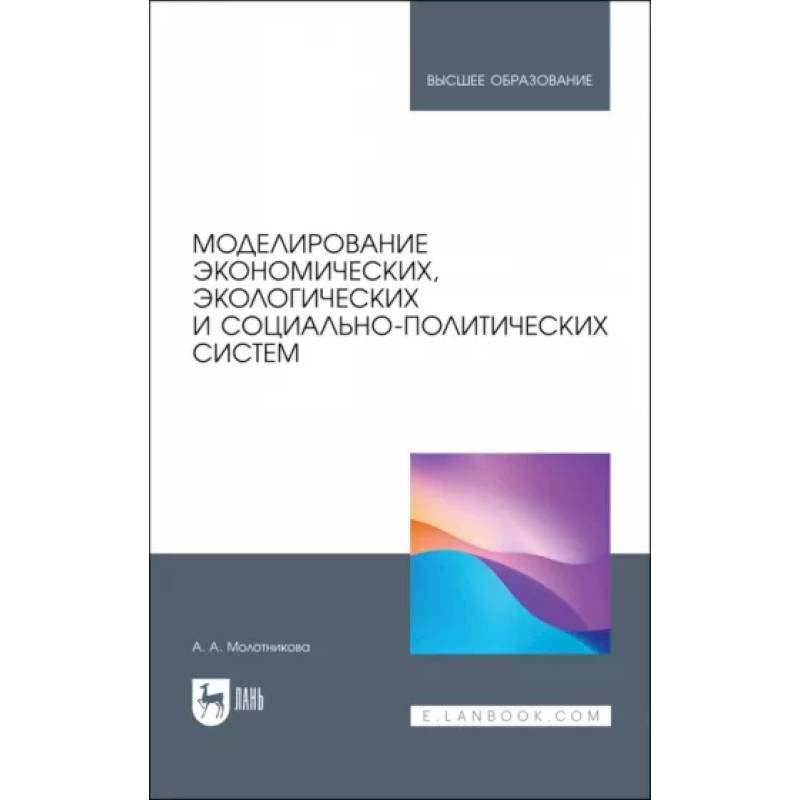Modeling economic, environmental and socio-political systems. Textbook for universities
Please sign in so that we can notify you about a reply
The textbook presents a brief overview of the goals, general principles and specific tools for mathematical modeling of economic, environmental and socio-political phenomena. The modeling of economic processes describes classic models, including two -factor production functions of Kobba - Douglas, Leontiev, etc. For dynamic processes, the principle of maximum and dynamic programming are used. Models of economic development with heterogeneous capital and labor described by differential and integral equations are also investigated. Economic systems are modeled taking into account technological progress.
When modeling environmental phenomena, both the laws of development and interaction of biological species, and physical laws of the environment (laws of diffusion, heat transfer, equations of hydrodynamics, etc) are used. Demographic models based on ordinary, differential equations are presented, the basic elements of their analysis are presented. Models of a population with an age structure are given. Models of the spread of pollution in the atmosphere and reservoirs are represented and analyzed.
For modeling socio-political phenomena, artificial intelligence models based on fuzzy logic, artificial neural networks and system dynamics are involved. To demonstrate the effectiveness of models, expert systems of dynamics of the number of crimes of a terrorist nature in Russia, in particular in the Rostov region, have been built. At the same time, on the example of assessing risks in construction, the effectiveness of intellectual models in economic systems is shown.
The textbook is focused on students of economic, technical and legal specialties, the specialization of which includes the following courses: “Computer modeling”, “Modeling systems”, “Modeling and forecasting of economic processes”, “Mathematical modeling of systems”, etc. He can It is also useful to be useful to specialists working in customs and law enforcement agencies, and persons involved in foreign economic activity
When modeling environmental phenomena, both the laws of development and interaction of biological species, and physical laws of the environment (laws of diffusion, heat transfer, equations of hydrodynamics, etc) are used. Demographic models based on ordinary, differential equations are presented, the basic elements of their analysis are presented. Models of a population with an age structure are given. Models of the spread of pollution in the atmosphere and reservoirs are represented and analyzed.
For modeling socio-political phenomena, artificial intelligence models based on fuzzy logic, artificial neural networks and system dynamics are involved. To demonstrate the effectiveness of models, expert systems of dynamics of the number of crimes of a terrorist nature in Russia, in particular in the Rostov region, have been built. At the same time, on the example of assessing risks in construction, the effectiveness of intellectual models in economic systems is shown.
The textbook is focused on students of economic, technical and legal specialties, the specialization of which includes the following courses: “Computer modeling”, “Modeling systems”, “Modeling and forecasting of economic processes”, “Mathematical modeling of systems”, etc. He can It is also useful to be useful to specialists working in customs and law enforcement agencies, and persons involved in foreign economic activity
Author:
Author:Molotnikova Antonina Alexandrovna
Cover:
Cover:Hard
Category:
- Category:Arts & Photography
- Category:Business & Money
- Category:Social Science & Politics
Publication language:
Publication Language:Russian
Paper:
Paper:Offset
Age restrictions:
Age restrictions:16+
ISBN:
ISBN:978-5-507-45494-5
No reviews found
